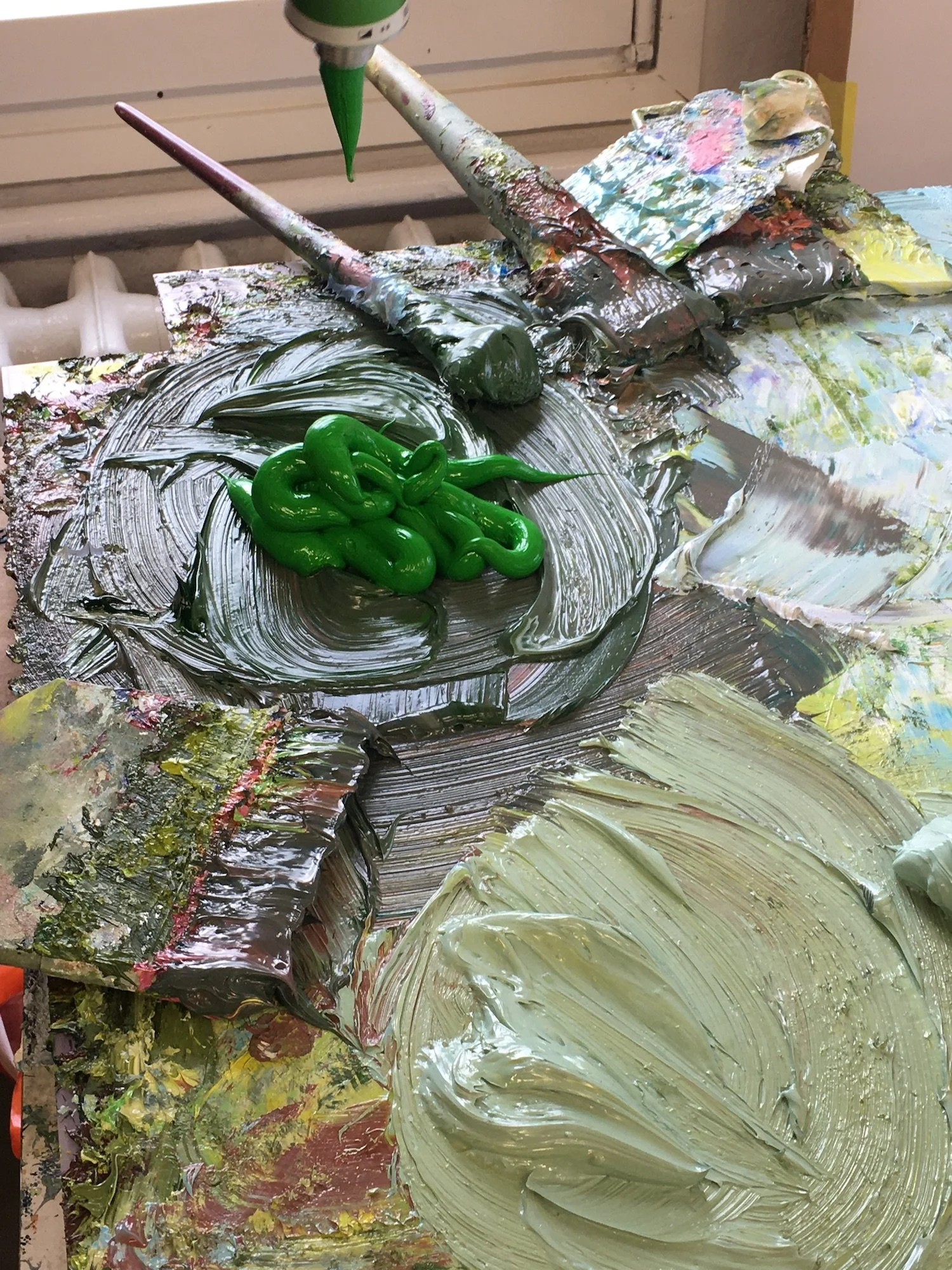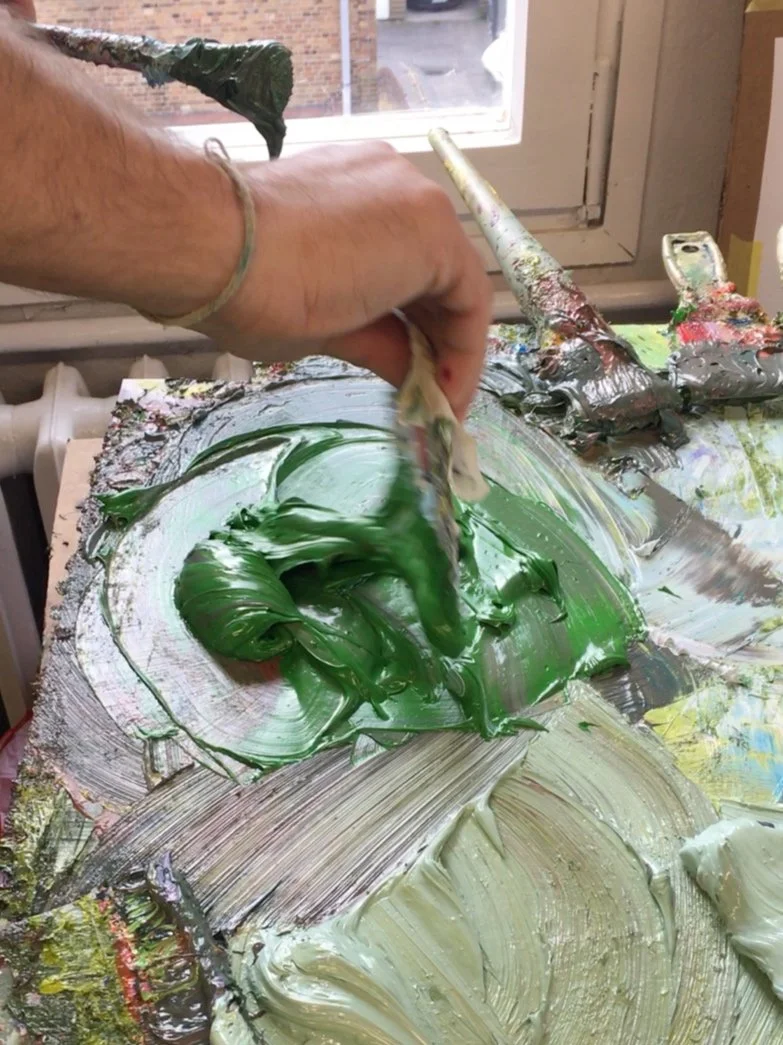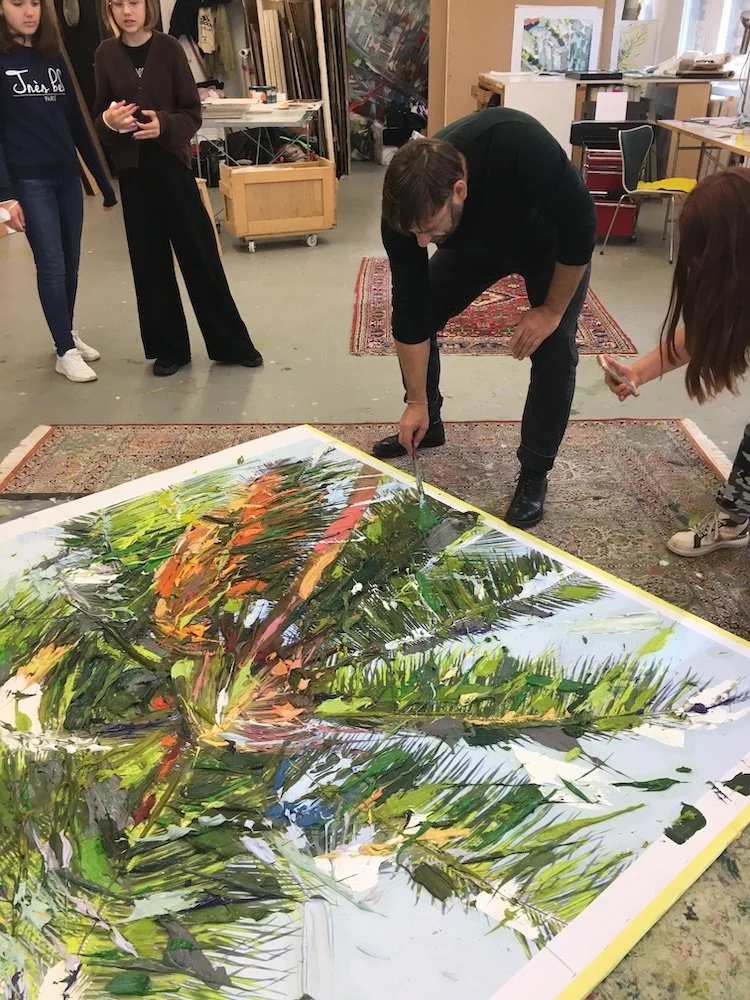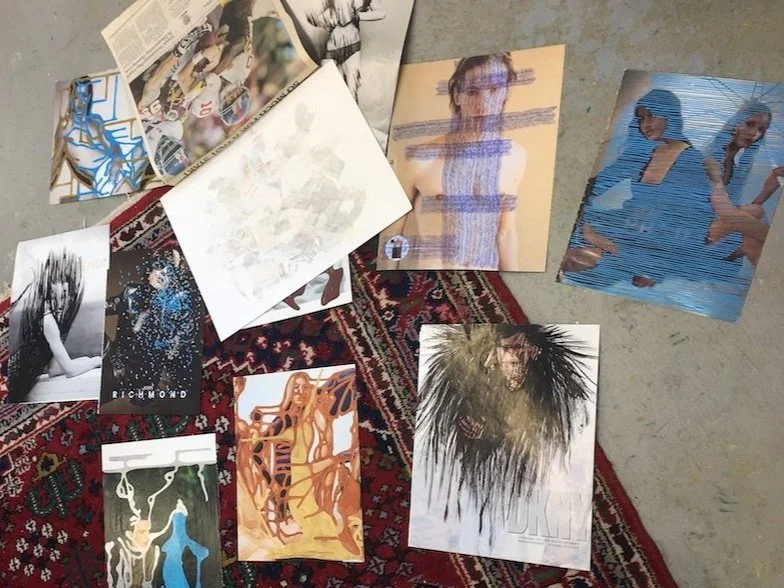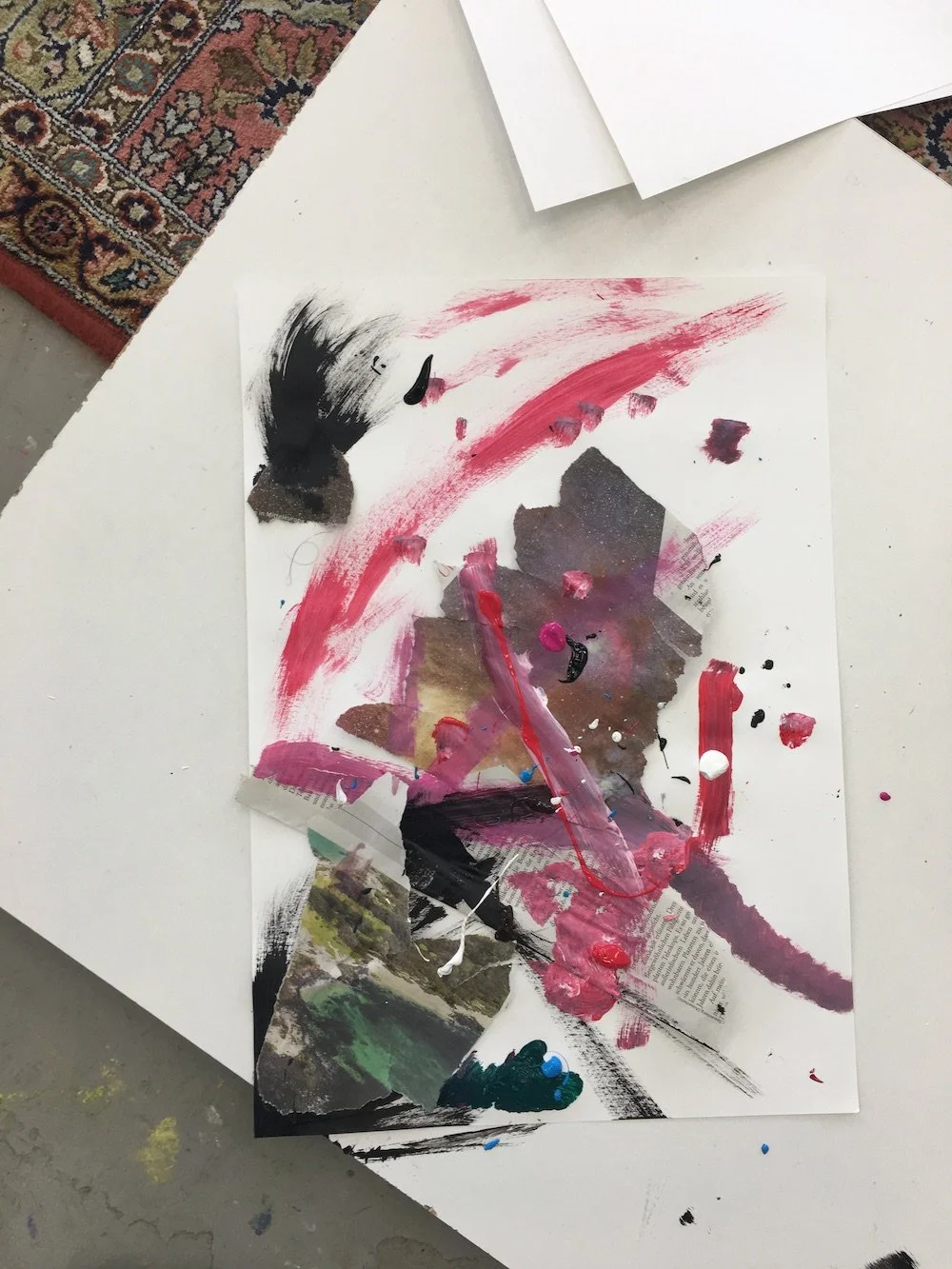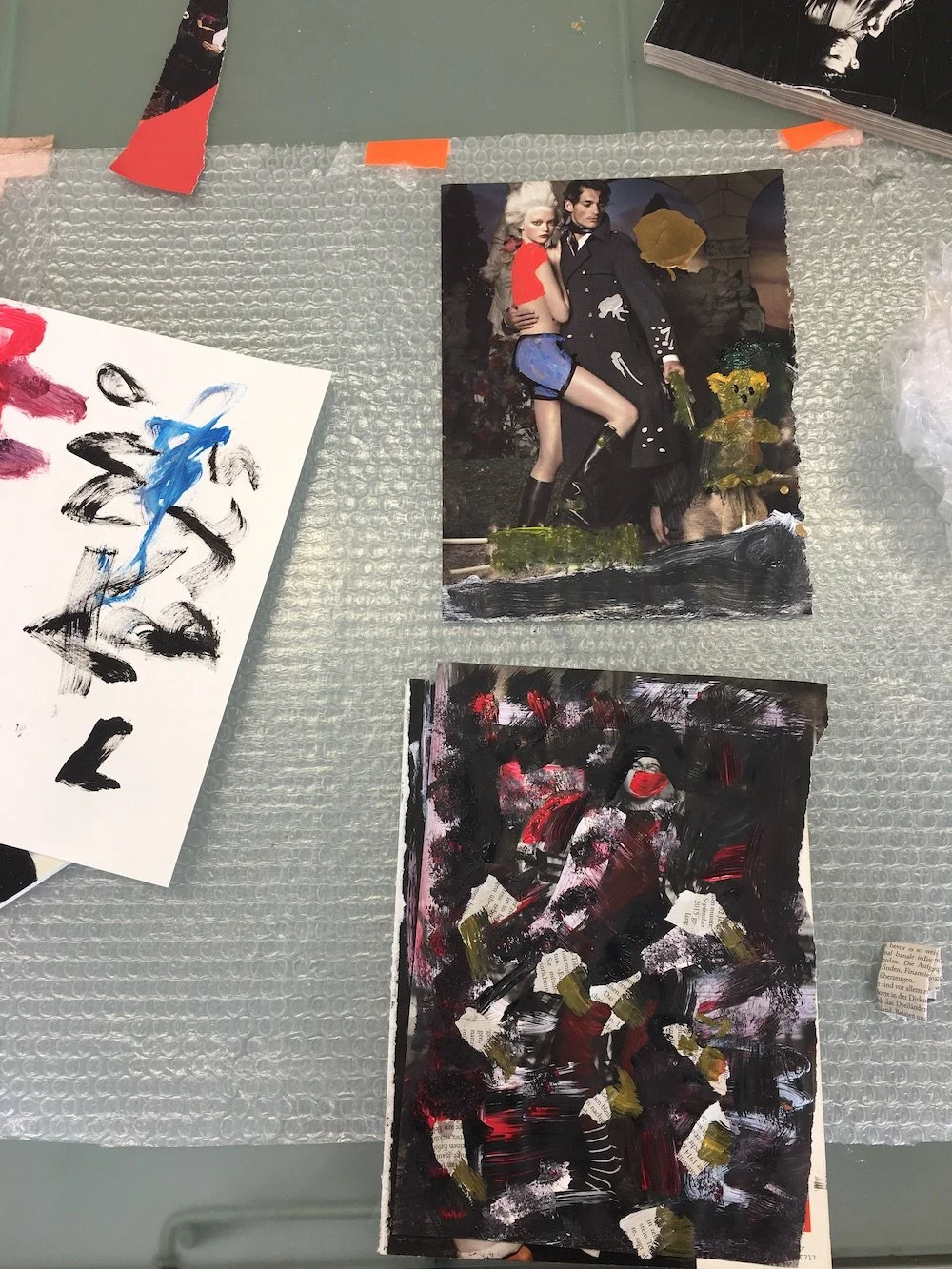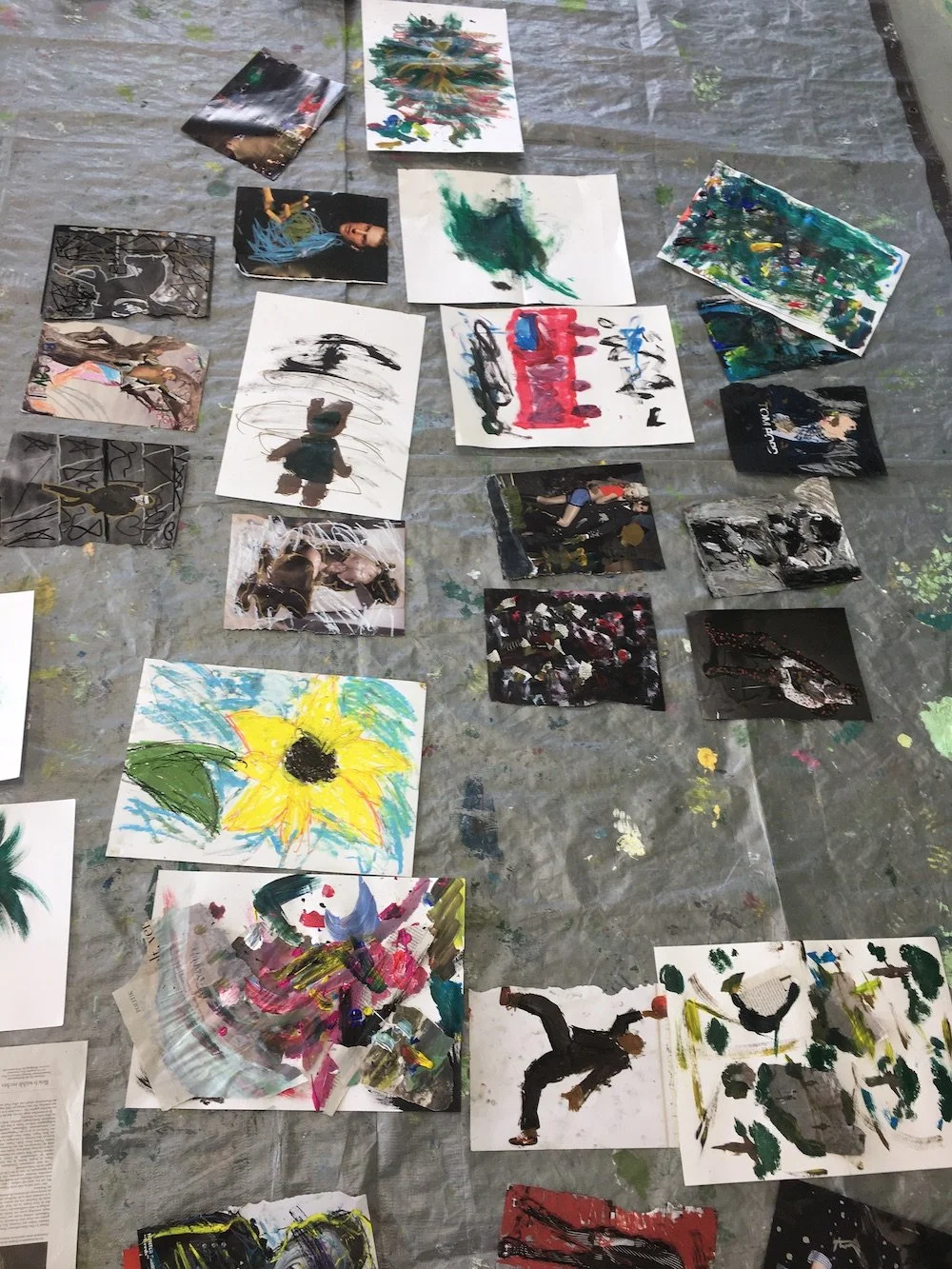Color fish and exploding palms by Erik Schmidt
Sometimes it’s not easy to find the right word. When we enter Erik Schmidt’s studio, the first thing that catches our eye are blobs of color: oil paint. But blobs of color is not the right word. The blobs of oil paint are as thick as fish bodies: green, pink-white, purple. Color fish? Such color fish can also be seen on the canvases, because the oil paint is not painted thinly everywhere. Erik throws it onto the painting with a sweep of his brush. As a result, the paintings do not have a smooth surface, but a structure. Like a lunar landscape. Or a deep ocean floor. It takes months for the color fish to dry on the canvases.
Erik has his studio in Berlin-Lichtenberg, in the HB55 art factory. Margarine was produced in the huge building complex 100 years ago. Today, the old factory offers plenty of space for exhibitions, studios and workshops.
When we visit the painter, he shows us pictures he is painting for an exhibition in Vienna. His studio is often the last stop on a trip; in the spring, for example, he flew to Sri Lanka. That was shortly after Russia invaded Ukraine. There he photographed palm trees. The special thing about his photos is that he usually goes to places for them that are not easily accessible. In Sri Lanka, it is forbidden to lie down in the middle under a palm tree because it is dangerous. If a palm tree drops a coconut, it can easily hit you. Erik photographed the palm trees exactly from this forbidden point: The viewers of the photos look up the trunk of the palm into the crown.
When the artist returns from his forays, he begins to paint over the photos in his studio. Maybe, he says, it’s a bit lazy, the picture is practically already there. But that’s not true, of course. The painted-over palm trees look like explosions, and that’s no coincidence, because even though he was in Sri Lanka, the war in Ukraine was on his mind. And if you look twice, the coconut and the palm bud he had made out of plaster look like hand grenades.
Erik also often works with images from others: With photos of Berlin or Tokyo, but also with the cover images of magazines, and he uses all kinds of materials – crayons, oil paint, ballpoint pen – to rework these images. Sometimes his careful overpaintings seem like a commentary on the original painting. Sometimes the result is a kind of mirror image of the original, sometimes something entirely new, under which the original photograph is barely recognizable.
Sometimes his careful overpaintings seem like a commentary on the original picture. Sometimes a kind of mirror image of the original emerges, sometimes also something completely new, under which one hardly recognizes the original photo anymore.
After telling us the story of his exploding palm trees and seeing how they become thicker and more colorful through the application of paint fish, Erik provides us with photos, newspapers and magazines. He has a treasure trove of them. He also gives us crayons, oil paint and all the materials he uses himself. Now we get started and try out what we can do with pictures that are already there. It works amazingly well! At the end of our visit, we don‘t feel any different than the artist: we can‘t take our works with us yet, because they still have to dry. Erik‘s exhibition in Vienna is in a month. By then, many of the color fish on his canvases won‘t be dry either.

